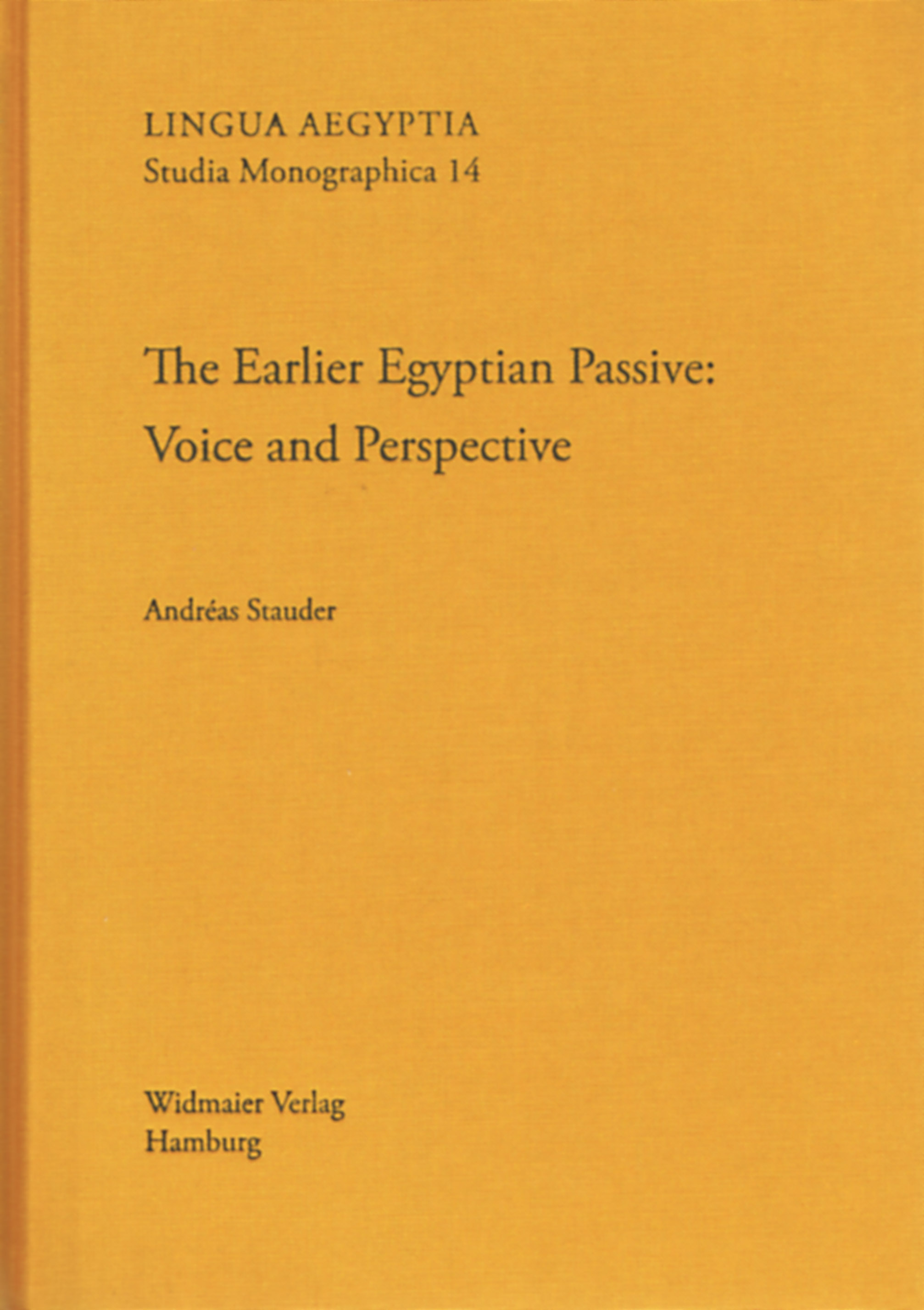Description
The study concerns passive voice in Earlier Egyptian (Old and Middle Egyptian
combined), providing a text-based description of the relevant forms and constructions,
and of their functions in discourse. It is argued that the passive is not merely a
symmetrical pendant to the active, but a complex domain of its own, morphologically,
semantically, and in terms of its discourse functions. This is manifest for example in
the morphological types of inflectional passives, the productivity of subjectless
passive constructions of various sorts, or the interaction of the passive with
stative/resultative voice. Passive voice further interacts with aspect: in the
unaccomplished, the passive has fewer forms than the active, while in the accomplished a
reverse situation is observed. The two inflectional passives in the accomplished—the
perfective V-passive (the ‘[TL: encoding=lingaeg]sDm(w)=f[:TL]’) and the T-passive of the
[TL: encoding=lingaeg]sDm.n=f[:TL] (the [TL: encoding=lingaeg]sDm.n.t=f[:TL])—are thus shown to contrast with one another
in principled semantic, not syntactic, ways. Major changes affecting passive voice
during the history of Earlier Egyptian are discussed: the loss of the prospective
V-passive, the spread of T-passives over the perfective V-passive in various
environments, and the rise of an ‘impersonal’ subject pronoun [TL: encoding=lingaeg].tw[:TL] out of an
inflectional passive marker. The last, a rare change and an instance of
de-grammaticalization, is analyzed in details in terms of the processes involved and of
the particular intra-linguistic situation that made it possible. Broadening the
perspective, relevant elements of the Semitic background are evoked.
Content overview
Introduction
Part I: Passive morphology and the passive construction
- 1 Passive morphology
- 1.1 T-passives
- 1.2 V-passives
- 1.3 Passives associated with partial reduplication: [TL:]cDmm=f[:TL] and [TL:]Ddd[:TL]
- 1.4 Non-finite and originally non-finite passive formations
- 2 The Earlier Egyptian passive construction
- 2.1 The semantic condition for passivization in Earlier Egyptian
- 2.2 The Agent-expressing phrase
- 2.3 Semantically oriented constructions: PO PsP and NPO r sDm
- 2.4 Interim summary
- 2.5 Functions of the passive
- 2.6 The passive in interaction with transitivity alternations
- 2.7 Earlier Egyptian active impersonal constructions
- 2.8 The [TL:]smn sw[:TL]O construction: Passive participles in a non-verbal construction
- 2.9 Part I, opening up: Earlier Egyptian and early Semitic detransitive morphology in contrast
Part II: Voice, aspect, and perspective
- 3 The passive in the unaccomplished and in the future
- 3.1 Passive subjects in the unaccomplished
- 3.2 Active-passive counterpart relationships in the unaccomplished
- 3.3 Expressions of the passive in the future
- 4 The passive in the accomplished
- 4.1 The complementary distribution PO PsP ~ V-pass non-P
- 4.2 V- and T-passives in the accomplished ‘emphatic’ construction
- 4.3 Two inflectional passives in the accomplished
- 4.4 Setting the analysis into a broader context
- 4.5 Part II, opening up: Passive voice as an autonomous linguistic domain
Part III: The loss of inflectional passives
- 5 The rise of an impersonal subject pronoun [TL:].tw[:TL] out of the inflectional marker of voice {T}
- 5.1 Describing the change in the record
- 5.2 A rare instance of degrammaticalization
- 5.3 Analyzing the change in its intralinguistic context
- 5.4 Part III, opening up: A sketch of the longer Earlier Egyptian durée
Appendix
- Texts
- References
- Index locorum
Reviews
Chris H. Reintges, in: Lingua Aegyptia 23 (2015), 289-316
Andreas H. Pries, in: Orientalia 85.1 (2016), 122-125:
- "Summa summarum besticht die Studie Stauders durch gründliche und auf einer vergleichsweise üppigen Anzahl von konkreten Textbelegen fußende Analysen, die nicht nur von der linguistischen Expertise, sondern auch von philologischem Feingefühl geleitet sind." (p. 124) "Für den Linguisten gehört das Buch damit zweifellos zur Pflichtlektüre" (p. 124)

